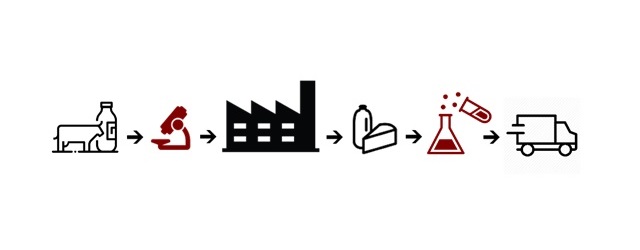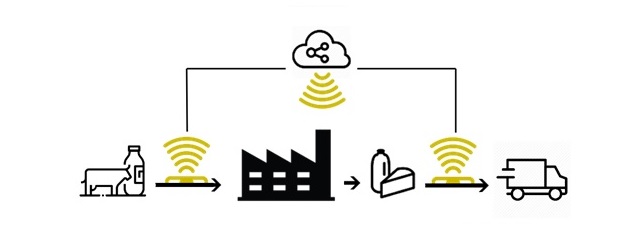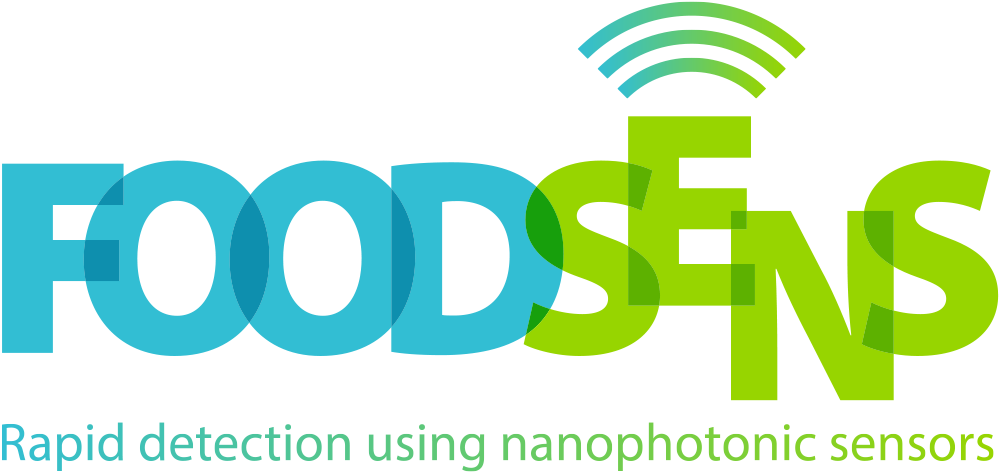FOODSENS
Fast detection of contaminants and adulteration in raw milk using dip-stick nanophotonic sensors

Before Foodsens

After Foodsens
The Project
WP1: Design and Construction of sensors
WP2: Development / Evaluation of Reagents and Comparative Analysis Methods
WP3: Implementation of a Metering System
WP4: Development and Preliminary Evaluation of the sensors
WP5: Evaluation of the FOODSENS microsystem by the food industry
In WP1 - Design and Construction of Photon Tiles, initially, single-analyzer tiles will be designed and manufactured, which will be used for the development of signal processing software, as well as the preliminary evaluation of the system in terms of sensitivity and dynamic range per parameter/target. The dual analyzer tiles will then be manufactured for use in WP4 and WP5.
WP2 - Development / Evaluation of Reagents and Comparative Analysis Methods will focus on the development of enzyme-linked immunosorbent assay methods for target analysis, as well as the development of sample processing protocols. At the same time, the selection and development of comparative methods (LC-MS / MS and microbiological) will be carried out through which the laboratory evaluation of the FOODSENS system will be performed, while studies of the presence of pathogenic microorganisms in dairy products will be carried out with emphasis on phenotypic / biochemical characterization of strains of B. cereus and L. monocytogenes.
WP3 - Has as its main objective the design and implementation of the FOODSENS device, both in terms of hardware and software. Emphasis will be placed on the development of a special application for a user-friendly portable device that will not require specialized personnel for its operation. A total of three provisions are envisaged, one for the preliminary evaluation studies and the other two for the full evaluation.
WP4 - Development and Preliminary Evaluation of Biosystems will deal with the chemical and biological activation of the sensors, the development of immunosorbents for individual analyzers / microorganisms, as well as the development and preliminary evaluation of immunosensor for synagogue / microsensor. Important WP4 objectives are the stability of immobilized biomolecules, finding common assay conditions for aflatoxin M1 and bovine casein, for both bacteria to facilitate the implementation of concurrent detection protocols with dual biosets, and the determination of the analytical characteristics of the methods (detection and quantification limits, linear response regions, repeatability within and between assays, accuracy).
These 4 WPs that will constantly interact with each other will lead synergistically to WP5 - Evaluation of the FOODSENS microsystem by the food industry, i.e. the pilot implementation of the FOODSENS rapid analyzer / microorganism detector in real conditions. An important part of the WP5, and one of the main objectives of the project is the preparation of a business plan and the definition of a strategy for the commercial use of the FOODSENS device, while a special sub-action will undertake the actions of promotion and dissemination of results in both academic and the business community. Finally, for the smooth and successful completion of the project, the potential risks and
Finally, for the smooth and successful completion of the project, the potential risks and the necessary alternatives have been foreseen. Thus, in case the limits and detection times targeted for the analysts cannot be achieved without the use of probes, their sample pre-concentration systems and signal amplification systems will be used without incurring the cost of analysis (~0.05 €/sample). Regarding the risk of patenting similar technology by other groups, a thorough search for relevant patents has already been carried out worldwide and it was found that until the date of submission of the proposal there is no relevant patent other than those held by ENM and EAP. However, the search for relevant diplomas will continue uninterrupted until the completion of the project.
